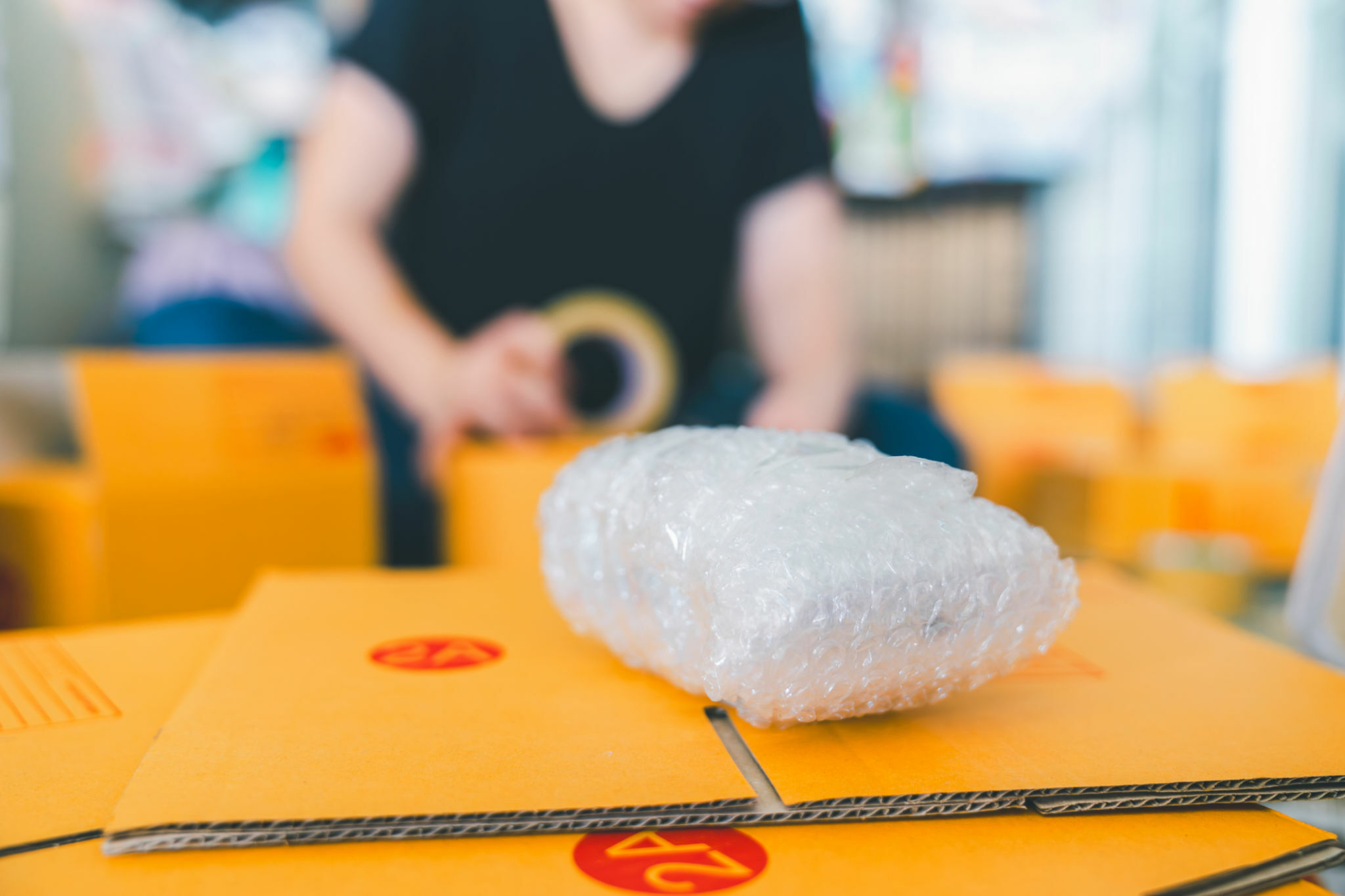Plastic Container Manufacturer Quality: Crafting Solutions for You
Plastic Container Manufacturer Quality: Crafting Solutions for You
Blog Article
Efficient Industrial Recycling Solutions for Sustainable Product Packaging: A Comprehensive Overview
That's where this comprehensive guide on reliable industrial recycling options for sustainable product packaging comes in. By exploring vital locations such as product packaging product selection, making for recyclability, carrying out recycling infrastructure, collaborating with reusing partners, and monitoring and gauging recycling success, this overview will certainly outfit you with the expertise and devices required to make enlightened choices and drive favorable change within your company. Whether you're a product packaging professional, sustainability manager, or merely interested in the topic, this overview will certainly offer valuable insights and approaches to assist you browse the world of lasting product packaging.
Product Packaging Material Selection
The selection of packaging materials plays an essential role in guaranteeing the sustainability of commercial recycling remedies. The option of products is key in minimizing ecological impact and making the most of recycling effectiveness when it comes to sustainable product packaging. Picking the appropriate products can help in reducing waste generation, preserve resources, and advertise a circular economy.
One essential aspect to take into consideration in product packaging material option is recyclability - industrial packaging solutions. Materials that can be quickly reused and integrated back into the production cycle are preferred. Products like cardboard, paper, glass, and specific types of plastics can be reused multiple times without losing their quality. On the other hand, materials that are hard to reuse, such as combined plastics or non-recyclable composites, can create obstacles for the reusing procedure and may wind up in incinerators or land fills.
One more factor to consider is the usage of naturally degradable and sustainable products. Packaging made from eco-friendly sources, such as plant-based plastics or biopolymers, can help in reducing dependency on fossil fuels and alleviate climate modification. Additionally, naturally degradable products break down naturally gradually, reducing the buildup of waste in landfills.
In addition, the weight and volume of packaging products should be reduced to reduce transportation costs and power intake. Light-weight materials not only need fewer resources during manufacturing yet likewise contribute to lower carbon emissions throughout transport.
Designing for Recyclability
In order to guarantee the recyclability of packaging materials, thoughtful design is important. Designing for recyclability includes creating product packaging that can be quickly sorted, separated, and processed in recycling centers. One crucial facet of designing for recyclability is the option of products. Product packaging developers need to prioritize using products that are extensively approved for recycling and have actually established reusing infrastructures. Products such as glass, aluminum, and certain sorts of plastic, like PET and HDPE, are typically reused and must be chosen over products that are expensive or difficult to recycle.
An additional vital consideration in designing for recyclability is the removal of unneeded components or products. By minimizing the number of layers, layers, and additional parts, packaging can be made simpler and less complicated to reuse. In addition, designers must intend to minimize the usage of blended products, as they can complicate the recycling process.

Implementing Recycling Framework
Effective implementation of recycling framework is critical for the success of industrial reusing services. Without appropriate framework in place, the recycling process becomes ineffective and inadequate, impeding the overall objective of sustainable product packaging.
To carry out reusing framework efficiently, a number of vital variables require to be thought about. Firstly, there need to be an efficient collection system that assists in the splitting up and collection of recyclable materials. This can consist of assigned reusing containers in public rooms, in addition to collaborations with waste monitoring companies for curbside pick-up and sorting.
When accumulated, the recyclable materials require to be delivered to reusing centers in a timely manner. This needs effective logistics and transport networks, making sure that the materials get to the ideal centers right away.
At the recycling facilities, progressed sorting and handling modern technologies ought to remain in place to separate different sorts of materials efficiently. This includes making use of automated sorting devices, optical scanners, and hand-operated sorting strategies.
Furthermore, there should be a durable market demand for recycled materials. This can be accomplished through collaborations with makers and industries that make use site link of recycled products in their production processes. Creating a secure market for recycled materials incentivizes the reusing sector and advertises the round economy.
Working Together With Recycling Partners

One secret element of teaming up with recycling partners is the establishment of clear communication channels. It is necessary to develop open lines of interaction to assist in the exchange of details, updates, and responses. This enables both events to remain informed regarding the progress of recycling campaigns and resolve any kind of obstacles or issues that might develop.
In addition, partnership can involve collaborations in making and carrying out recycling programs. Recycling companions can give beneficial insights and guidance in establishing efficient collection systems and identifying the most suitable recycling innovations. By functioning together, companies and recycling partners can enhance the recycling process and decrease waste.
Furthermore, partnership can prolong beyond the operational aspects of recycling. It can also include advocacy and education initiatives. By signing up with forces, businesses and reusing companions can increase awareness concerning the importance of recycling and promote the fostering of lasting packaging practices amongst consumers and other stakeholders.
Monitoring and Measuring Recycling Success
To ensure the efficiency of industrial reusing options and the achievement of lasting packaging objectives, it is important for organizations and their recycling partners to develop an extensive system for monitoring and gauging recycling success (processing company). Tracking and measuring recycling success permits services to examine the impact of their recycling initiatives, recognize areas for enhancement, and set meaningful targets for future progression
One means to track reusing success is via making use of information collection and analysis tools. By gathering information on the quantity of packaging waste generated, the portion of waste that is recycled, and the kinds of products being reused, organizations can obtain important insights into their recycling efficiency. This information can then be examined to recognize fads, patterns, and areas of inefficiency.
One more crucial aspect of monitoring and measuring reusing success is establishing clear and standardized metrics. This allows companies to compare their performance versus market benchmarks and track their progression over time. Metrics such as reusing useful content rates, waste diversion prices, and greenhouse gas emissions can offer a measurable procedure of an organization's recycling success.

Conclusion
In final thought, implementing reliable industrial recycling services for lasting packaging needs careful factor to consider of product packaging material choice, making for recyclability, executing recycling facilities, working together with recycling partners, and monitoring and measuring recycling success. By including these practices, services can add to an extra sustainable and environmentally-friendly method to product packaging, lowering waste and advertising the round economic climate.
By checking out vital areas such as product packaging product option, developing for recyclability, carrying out recycling infrastructure, teaming up with recycling partners, and monitoring and measuring reusing success, this guide will certainly outfit you with the expertise and tools essential to make educated decisions and drive favorable change within your organization. Packaging developers should prioritize the usage of materials that are widely accepted for reusing and have actually established reusing facilities.Cooperation with reusing companions is crucial for the successful execution of commercial recycling solutions and the accomplishment of lasting product packaging objectives. By signing up with forces, companies and recycling companions can elevate awareness regarding the value of recycling and promote the fostering of sustainable product packaging practices among customers and various other stakeholders.
By gathering information on the amount of product packaging waste created, the percentage of waste that is recycled, and the types of materials being reused, companies can gain important understandings right into their recycling efficiency.
Report this page